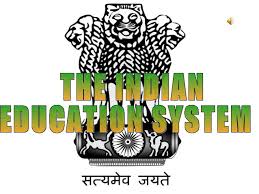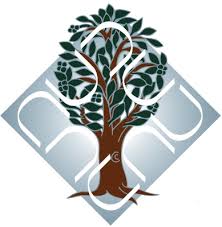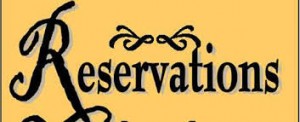In the Beginning
In ancient times, India had the Gurukula system of instruction in which anyone who wished to study went to a teacher’s (Guru) house and requested to be instructed. If taken as a pupil by the guru, he would then remain at the guru’s place and assist with all bodily functions at home. This not merely created a firm link between the instructor and the student, but also taught the student everything about being given a household. The guru taught everything the kid desired to discover, from Sanskrit to the holy scriptures and from Mathematics to Metaphysics. The student stayed as long as she wished or until the jury felt that he had taught everything he could instruct. All learning was closely related to nature and to life, and not confined to memorizing some information.
The advanced school system was brought to India, including the English speech, in the first place by Lord Thomas Babington Macaulay in the 1830s. The curriculum was confined to “modern” issues such as science and maths, and subjects like metaphysics and philosophy were considered unnecessary. Teaching was confined to classrooms and the connection with nature was ruined, as likewise the tight kinship between the instructor and the pupil.
The Uttar Pradesh (a province in India) Board of High School and Intermediate Education was the first Board set up in India in the year 1921 with jurisdiction over Rajputana, Central India and Gwalior. In 1929, the Board of High School and Intermediate Education, Rajputana, was launched. Later, boards were established in some of the provinces. Only eventually, in 1952, the constitution of the board was repaired and it was renamed Central Board of Secondary Education (CBSE). All schools in Delhi and some other regions came under the Board. It was the role of the Board to decide on things like curriculum, texts and examination scheme for all schools associated to it. Today there are thousands of schools affiliated to the Board, both within India and in many other states from Afghanistan to Zimbabwe.
Universal and compulsory education for all kids in the age group of 6-14 was a cherished aspiration of the young government of the Republic of India. This is apparent from the fact that it is incorporated as a directive policy in clause 45 of the organic law. But this objective remains farther away even more than half a century afterwards. Yet, in the recent past, the regime seems to have struck a grave note of this lapse and has made primary education a Fundamental Right of every Indian citizen. The pressures of economic development and the acute scarcity of skilled and trained manpower must certainly have made for a role to establish the government assume such a measure. The using up of the Government of India on school education in recent years adds up to roughly 3% of the GDP, which is known to be very depressed.
“In late times, several major announcements were made for developing the poor state of affairs in education sector in India, the most famous ones being the National Common Minimum Program (NCMP) of the United Progressive Alliance (UPA) government. The announcements are; (a) To progressively increase expenditure on education to around 6 percent of GDP. (b) To support this increase in outlay on education, and to increase the quality of education, there would be an infliction of an education cess over all central government taxes. (c) To ensure that no one is denied of education due to economic backwardness and poverty. (d) To make right to education a fundamental right for all kids in the age group 6–14 years. (e) To universalize education through its flagship programs such as Save Siksha Abhiyan and Mid Day Meal.”
The School System
India is divided into 28 states and 7 so-called “Union Territories”. The lands take in their own elected governments while the Union Territories are governed directly by the Government of India, with the President of India appointing an administrator for each Union Territory. As per the constitution of India, school education was originally a state issue —that is, the states had complete authority on deciding policies and enforcing them. The purpose of the Government of India (GoI) was limited to coordination and deciding on the standards of higher training. This was modified by a constitutional amendment in 1976 so that education now comes in the so-called concurrent list. That is, school, education policies and programs are proposed at the national level by the go though the state governments bear a great deal of freedom in carrying out plans. Policies are announced at the national level periodically. The Central Advisory Board of Education (CABE), set up in 1935, continues to play a lead part in the development and monitoring of educational policies and plans.
Thither is a national governing body that acts as a central function in preparing policies and programs, called the National Council for Educational Research and Training (NCERT) that organizes a National Curriculum Framework. Each country takes in its counterpart called the State Council for Educational Research and Training (SCERT). These are the physical structures that essentially propose educational strategies, curricula, pedagogical strategies and evaluation methodologies to the states’ departments of instruction. The SCERTs generally follow guidelines set up by the NCERT. But the nations have considerable freedom in putting through the training system.
The National Policy on Education, 1986 and the Program of Action (POA) 1992 envisaged free and compulsory education of satisfactory quality for all children below 14 years before the 21st Century. The government committed to earmark 6% of the Gross Domestic Product (GDP) for education, half of which would be spent on primary education. The spending on Education as a part of GDP also grew from 0.7 per cent in 1951-52 to about 3.6 per cent in 1997-98.
The school system in India has four levels: lower primary (years 6 to 10), upper primary (11 and 12), high (13 to 15) and higher secondary (17 and 18). The lower primary school is split into five “standards”, upper primary school in two, high school in three and higher secondary into two. Pupils have to take a common curriculum largely (except for regional changes in the mother tongue) till the remainder of high school. On that point is some measure of specialization possible at the higher secondary stage. Pupils throughout the country have to learn three languages (namely, English, Hindi and their mother tongue) except in regions where Hindi is the mother tongue and in some streams as discussed infra.
On that point are mainly three streams in school teaching in India. Two of these are coordinated at the national level, of which one is under the Central Board of Secondary Education (CBSE) and was originally meant for children of central government employees who are periodically removed and may hold to go to any position in the state. A figure of “central schools” (named Kendriya Vidyalayas) have been made for the intent in all main urban areas in the nation, and they pursue a usual schedule so that a student dying from single school to another on a particular day will hardly experience any divergence in what is being instructed. Single field (Social Studies, consisting of History, Geography and Civics) is constantly taught in Hindi, and other themes in English, in these schools. Kendriya Vidyalayas admit other children also if seats are usable. All of them follow textbooks written and issued by the NCERT. In improver to these government-run schools, a number of private schools in the country follow the CBSE syllabus, though they may apply different text books and observe different teaching schedules. They possess a certain quantity of freedom in what they teach in lower grades. The CBSE also has 141 affiliated schools in 21 other countries, mainly catering to the demands of the Indian population there.
The second central scheme is the Indian Certificate of Secondary Education (ICSE). It appears that this was taken off as a replenishment for the Cambridge School Certificate. The idea was debated in a conference held in 1952 under the Chairmanship of Maulana Abul Kalam Azad, the then Minister for Education. The primary aim of the conference was to look at the substitute of the overseas Cambridge School Certificate Examination by an All India Examination. In October 1956 at the confluence of the Interstate Board for Anglo-Indian Education, a proposal was embraced for the putting up of an Indian Council to administer the University of Cambridge, Local Examinations Syndicate’s Examination in India and to advise the Syndicate on the best path to adapt its examination to the needs of the nation. The first meeting of the Council was declared on 3rd November, 1958. In December 1967, the Council was registered as a Society under the Societies Registration Act, 1860. The Council was listed in the Delhi School Education Act 1973, as a body conducting public examinations. Now a large number of schools across the country are affiliated to this Council. Altogether these are private schools and mostly cater to children from wealthy folks.
Both the CBSE and the ICSE council conduct their own exams in schools across the state that are affiliated with them at the close of 10 years of schooling (after high school) and again at the end of 12 years (after higher secondary). Admittance to the 11th class is commonly based on the performance in this all-India examination. Since this places a great deal of pressure on the youngster to execute good, there have been suggestions to remove the examination at the remainder of 10 years.
Exclusive Schools
In summation to the above, there are a relatively low number of schools that follow foreign curricula such as the so-called Senior Cambridge, though this was largely supplanted by the ICSE stream elsewhere. Some of these schools also offer the pupils the opportunity to posture for the ICSE examinations. These are normally very expensive residential schools where some of the Indians working abroad send their kids. They usually have fabulous infrastructure, low student-teacher ratio and very few scholars. Many of them have teachers from abroad. There are besides other exclusive schools such as the Doon School in Dehradun that take in a low number of students and charge outrageous fees.
Aside from all of these, there are a handful of schools around the nation, such as the Rishi Valley school in Andhra Pradesh, that try to break out from the normal education system that promotes rote learning and implement advanced systems such as the Montessori method. Most such schools are expensive, have high teacher-pupil ratios and provide a learning environment in which each child can learn at his/her own rate. It would be interesting and instructive to do a survey on what impact the kind of school experiences had on the liveliness of their alums.
State Schools
Each province in the country receives its own Department of Education that leads its own school system with its own textbooks and evaluation scheme. As noted earlier, the curriculum, instruction and evaluation method are mostly determined by the SCERT in the country, taking after the national guidelines prescribed by the NCERT.
Each land takes in three sorts of schools that come after the state course of study. The government operates its own schools in land and buildings owned by the government and paying the staff from its own resources. These are broadly known as government schools. The fees are quite low in such schools. Then there are privately owned schools with their own land and constructions. Here the fees are high and the teachers are paid by the management. Such schools, mostly cater to the urban middle class folks. The third kind consists of schools that are provided grant-in-aid by the government, though the school was begun by a private agency in their own land and constructions. The grant-in-aid is meant to assist bring down the fees and make it possible for poor folks to transport their kids. In some states like Kerala, these schools are very similar to government schools since the instructors are paid by the regime and the fees are the same as in government schools.





13 Comments. Leave new
Very informative and thought-provoking. A country with 6% of its GDP spending on education is bound to be prosperous in coming times…
a lot research and knowledge!
Oooh! This much of interesting and informative article!
Nicely written.
so informative .. well done (y)
Very well framed, from the ancient to the modern systems
Impressive!
Thank you guys.
You wrote each and every point very well.
Well researched
Well Researched Topic 😀
nicely presented…….couldn’t have been better!
This is what you call a 😀 complete article :d
Content 5/5
Presentation 5/5 😀
Good work 😀
Well researched